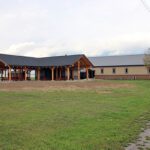Home »

Local Rotarians provide computers for Honduran students
Thanks to the efforts of Cranbrook Rotarians, a school in a small rural village just outside of Santa Barbara, Honduras will soon have the use of 12 new computers, couple of printers and other supplies for its under-equipped computer class in one of the poorest parts of the world.
“It wasn’t easy but we’re glad we’ve finally got it done,” said Janice Sommerfeld, International Service Chair of the Cranbrook Sunrise Rotary Club.
 The $4,797 (US) Rotary International District Project has been carried out with the help of the Rotary Club of Santa Barbara in the village of La Cuesta, where the Jose Trinidad Cabanas (JTC) School is located serving 240 students in nine grades. The school previously had only five computers and an outdated printer to serve its IT (information technology) students.
The $4,797 (US) Rotary International District Project has been carried out with the help of the Rotary Club of Santa Barbara in the village of La Cuesta, where the Jose Trinidad Cabanas (JTC) School is located serving 240 students in nine grades. The school previously had only five computers and an outdated printer to serve its IT (information technology) students.
“Honduras is one of the poorest countries in the world and the only way up for its impoverished citizens is through computer technology to help develop its economy,” said Sommerfeld.
The tiny Central American country of almost 10 million is plagued by crime and drug gangs and in the rural areas more than 60% of the population lives below the poverty line. The project was made even more difficult by the COVID-19 outbreak and two major hurricanes last year which killed more than 200 people and destroyed much of the Honduran economy.
Despite this, the computers have been purchased and are being installed in the 73-year-old school that was heavily damaged by the hurricanes.
Students are looking forward to school resuming and are eager to learn new skills once the hurricane damage to the school is repaired and Covid is under control, with the authorities allowing in class sessions. Currently, with only five computers, it was very difficult to teach and for the students to get any hands-on learning. Any increase in the number of computers for this class will be of great benefit to the school and all of its students.
Assistance for the project was provided by David Morley of the Cranbrook (Noon) Rotary Club, which carries out its own Rotary projects in the area. Morley saw the first-hand need for more computers at the La Questa school and used his Rotary connections in Santa Barbara to get the project off the ground.
Rotarian Percy Davis, of the Cranbrook Sunrise Club, also assisted financially when Covid and the hurricanes played havoc on the supply chains, driving prices up and the currency exchange down for this poor Central American country.
A matching grant for the project was provided by Rotary District 5080 which includes Rotary Clubs in B.C., Washington and Idaho. The project was coordinated by the Cranbrook Sunrise Rotary Club and received a matching grant from the Rotary Foundation which finances similar projects on a world-wide basis in seven areas of focus. The La Questa project fell into the education and literacy focus area of RI.
“Computer literacy would be of particular significance to women graduating from high school because any work in the formal sector requires computer literacy skills. For the most part, women in Honduras are more or less excluded from work in the trades,” said Rene Vasquez of the Santa Barbara Rotary Club.
Santa Barbara Rotarians assisted with coordinating the project throughout and have expressed great appreciation for the help they’ve received from their fellow Rotarians in Cranbrook and Rotary District 5080.
Sommerfeld said, “One of the things I love most about being a Rotarian is working with other Rotarians both locally and internationally to help with projects that improve the lives of others.”
Lead image: Eager class of students at Jose Trinidad Cabanas (JTC) School in La Cuesta near Santa Barbara, Honduras. one of the poorest countries in the Western Hemisphere. Cranbrook’s Sunrise Rotary Club recently raised US$4,797 for a Rotary Global Grant that saw 12 new computers purchased for the school to enable students to learn new skills that will help them find employment and lift them out of poverty. The school, named after a former Honduran President, previously had only five computers to teach 250 students. Photos submitted
Submitted







